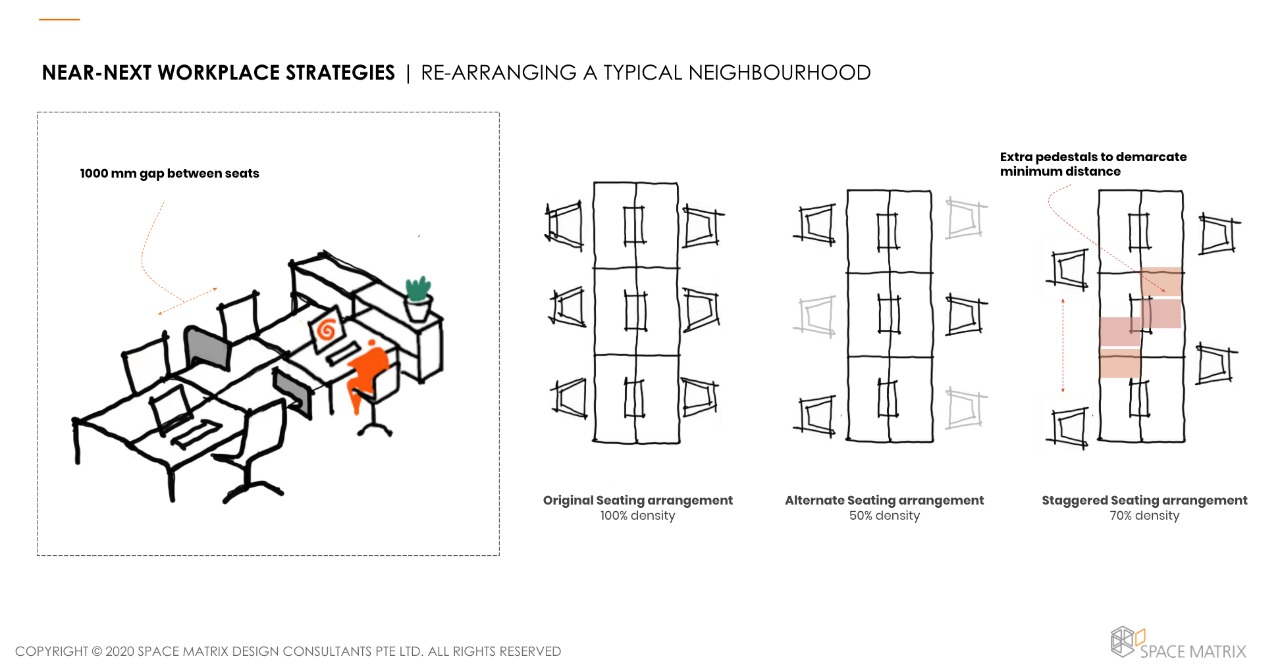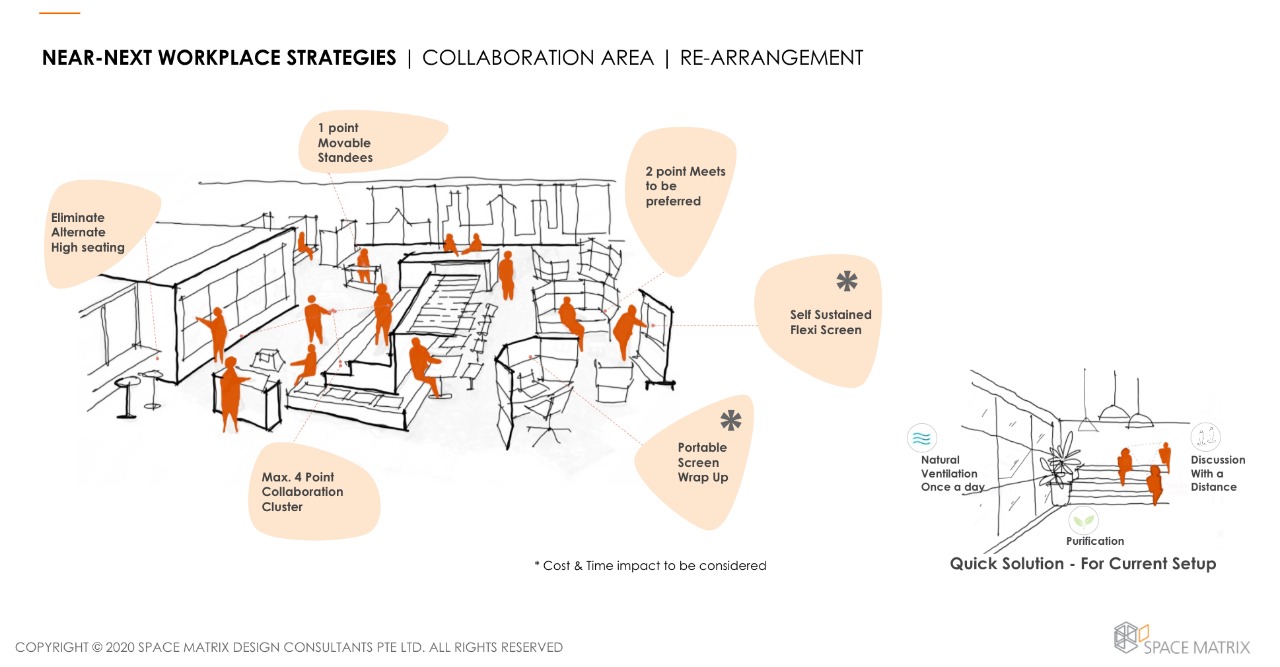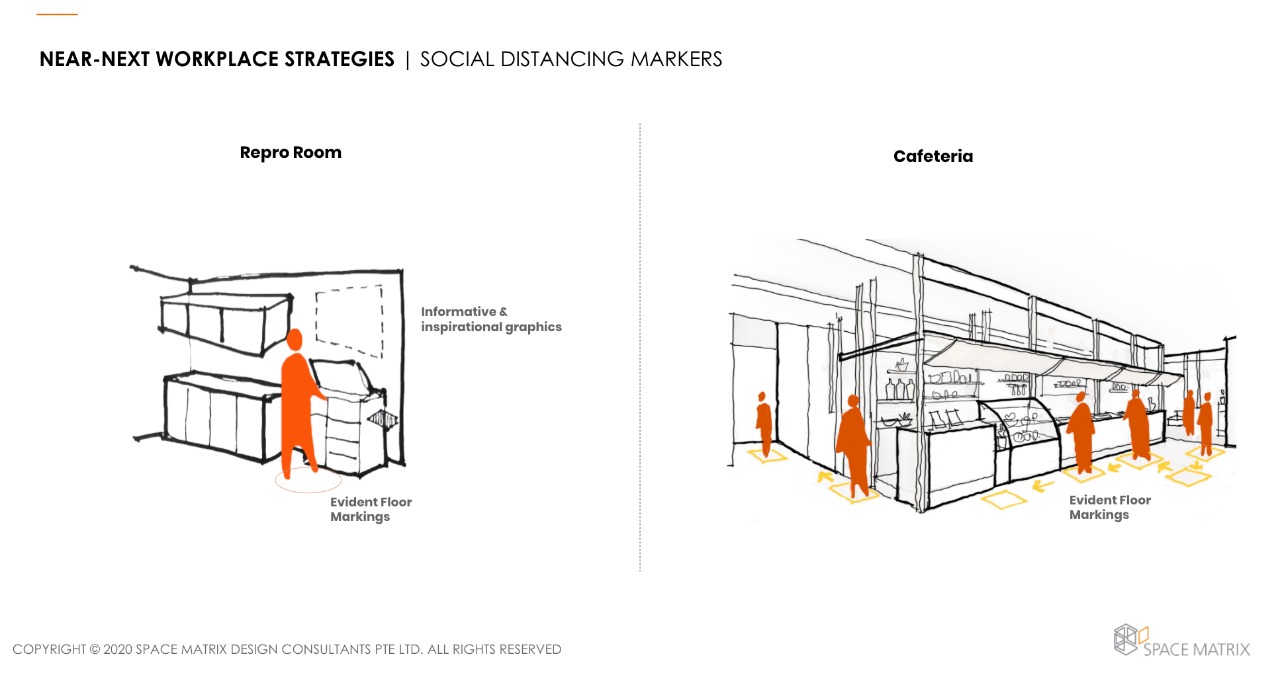
The Five-Point Path: An integral part of Space Matrix’s Workplace Reboot Programme to return to the workplace
You can’t replace lockdown with nothing.
— Dr. Mike Ryan, Executive Director of the WHO Emergency Program
For most people around the world, the last few weeks have been marked by Coronavirus-driven lockdowns, stay-at-home orders and quarantine mandates. But as we complete several weeks of this new reality, we begin to approach the next phase of the cycle. Some countries have already eased or partially lifted the lockdowns — others are slowly following suit. Soon, offices will gradually open up again, and employees who reside in the safe zones will be allowed to come back to work.
However, in the absence of a COVID-19 vaccine, things cannot get back to the way they were, with employees working, commuting and collaborating as before. The health concerns remain, so companies will need to take adequate steps to ensure safety and prevent a possible second wave of the outbreak. Moreover, as empathetic employers, they will need to allay any fears that employees have about returning to work. After all, the biggest task before every company right now is to make its people feel safe, trusted and valued.
To ensure business continuity and help clients navigate these uncertain times, Space Matrix developed the WORKPLACE REBOOT PROGRAMME — a tool kit of 5 key service offerings to craft bespoke solutions for their clients. Critically, the solutions address WORKPLACE READINESS — how organisations return to the office safely; and WORKPLACE REDEFINITION — how they transition to a ‘new normal’ regardless of existing or new build workplaces.
As part of this programme, we have identified 5 major concerns that employees face when returning to work and applied the Five-Point Path of key design solutions to address these:
1. Collaborating safely while maintaining social distance
As employees come back to the office, they will be keen to make up for the weeks of lost collaboration. They will want to engage with coworkers, work on new ideas together or simply enjoy some face-to-face human interaction. But even as they look forward to reaping the benefits of collaboration, they will harbor some natural trepidation about whether it’s really safe to do so.
It is up to employers to ease this trepidation. The most straightforward way of doing this is through smart space planning. Simply by alternating or staggering their teams, organisations will be able to reduce headcount by 20%-50%. With fewer people coming to office on any given day, employers will be free to tweak their seating arrangements to be much safer — by removing every alternate workstation or by adding extra pedestals to increase the distance between two seats.

Hot desking with ergonomic seats can be an effective way to make use of the available space too. This system comes with an additional benefit — having an unassigned seating policy ensures that desks are all empty at the end of the day and can be easily scrubbed clean.
Self-sufficient neighbourhoods are another logical office design solution. With each team assigned to a single neighbourhood, this system helps limit constant movement across the office. The neighbourhoods can be rearranged to have alternating shared zones and individual workspaces, which will all be accessed via a single, secure corridor equipped with sanitiser stations & thermal checkpoints.
Most formal meeting rooms have one central conference table, with participants huddled all around it. Instead of this central focus, companies can think of reinventing the meeting room with individual seats dotted around the periphery, at a safe distance from one another. Informal collaboration spaces can be shielded with the introduction of movable screens, partitions and standees.

2. Allaying concerns about contact points
Despite maintaining safe social distances, employees will be (rightly) worried about surface contamination too. A normal workday would typically bring them in contact with several shared surfaces and touch points — doors, light switches, table surfaces and so on.
Reconsidering the materiality of these surfaces is a great near-next solution to this. Antimicrobial agents can be used to coat these surfaces to prevent germs from being able to survive there. Similarly, antimicrobial paint and materials can be used on walls, ceilings and floors to ensure a safer indoor environment overall.
The other way to tackle this concern of course, is by limiting the transmission of germs from one surface to the other. Think standees and flexible partitions placed between different clusters and neighbourhoods. Consider movable screens and lightweight furniture, which can be used to reconfigure the office interiors and create widely spaced work areas. Desk demarcators can also be a useful addition to create a necessary separation between two workstations.

3. Managing unforeseen crowds and situations
One valid concern that employees are bound to have is how unforeseen crowds will be managed. Even if an employer plans to have fewer people in office and steps up their cleaning routines, there are some situations that may be entirely out of their control. For example, what if there’s a holdup at the print station, or a delay in the pantry causes an unexpected crowd in the cafeteria?
Leveraging smart workplace technology and systems is a modern, logical way to address this. IoT-driven solutions like occupancy sensors can generate accurate, real-time data for high-density spaces like cafes, meeting rooms and pantries. This data can be made available to all, with display boards or apps. Access to such real-time information can then empower people to make better choices — they can view the occupancy of their building and decide whether they want to come to office that day; they can monitor the crowd in the cafeteria and plan their lunch break accordingly. Smart systems like meeting room booking software can ease the flow of traffic by eliminating the need for people to move around the entire office looking for unoccupied spaces. Automatic doors and app-based security systems can be safer alternatives to touchpoints like door handles and number pads.
Smart systems and technology can give a higher degree of control to the employer too. The management will be able to set a maximum occupancy limit for each space, and program an alert to be triggered each time the numbers exceed this limit. They can use IoT thermal sensors to carry out temperature checks at strategic access points.
Technology can be leveraged to ease other aspects of team management too. Even after the lockdowns are lifted, some team members will want to (or have to) work from home. Smart interactive screens like Google Jamboard can make it easy for people to collaborate with colleagues who are working from the office that day.
4. Addressing concerns about whether others will follow safety protocols
Even when an employee practices extreme caution themselves, they still need to be sure that others are doing so too. The employer cannot just address these concerns by enforcing regulations reactively, and at an individual level. They will have to make an effort to bring about an organisation-wide change in culture and behaviour.
One simple way to do this is with the widespread usage of graphics, floor markings and signages that will function as constant reminders to maintain social distancing. Entry and exit points will have to be clearly defined in high-traffic areas to ensure a unidirectional flow of people. Managers will have to educate and inform their teams about hygienic best practices, and ensure that the proper protocols are being followed.

5. Overcoming insecurities about transitioning back to the workplace
For many employees, coming back to office might be stressful — and not just because of health concerns. Extended isolation, uncertainties about the future and increased domestic and childcare responsibilities may have left a lot of people feeling anxious and emotionally wrung out.
So, safety and security are not the only concerns an employer will have to tackle — they will need to look after people’s mental health too. Sustainability and wellness solutions can go a long way here. Being surrounded by biophilic elements has proven physiological and psychological advantages. Moreover, it helps boost immunity — a factor that will be increasingly important in the coming days. So even adding extra plants and indoor greenery to the interiors can work wonders in making the workplace soothing and welcoming. As an added advantage, certain types of plants also help filter and purify the air within the office. This reduces the need for chemical purifiers and air fresheners, thereby creating a healthier indoor environment. Other calming elements like soft music, gentle fragrances, and soothing graphics can be used to make the office a happy, comforting haven. After the last few stressful weeks, this might be just what people need as they transition back to the office.
Want to know what the near-next should look like for your firm? Reach out to our consultants to discuss how you can prepare your organisation for the post-COVID era.
Our Design Director, Titir Dey, manages key accounts across all the studios of Space Matrix and helps in identifying and evolving design concepts and solutions for her clients. With over 12+ years of experience in the field, she constantly drives herself and her team to find creative, innovative solutions for the workplace, with a focus on sustainable, human-centred design.
